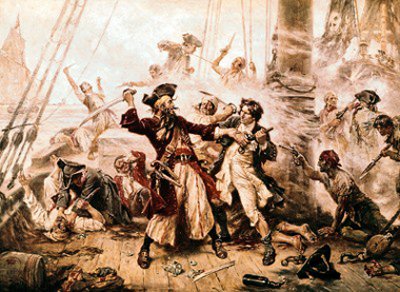
There is little original source material relating to pirates, and much of what does exist is a mix of truth and fiction. Thus, much of who these men really were is left up to interpretation. As is often the case, such a lack of firsthand accounts of piracy has allowed for the growth of considerable amounts of folklore. With that said, we now present a dossier on some of the more legendary scoundrels of the seas.
William Kidd
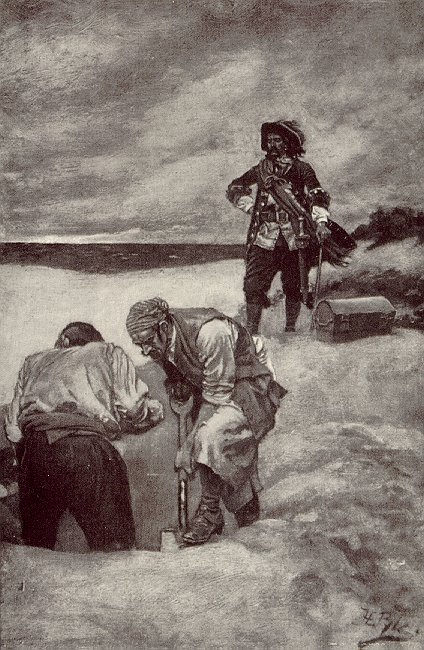
Years active: 1696-1701
Location: Indian Ocean, Caribbean Sea, and off the east coast of North America.
Fate: Hung and gibbeted over the River Thames in London, where his body remained for over twenty years as a warning to those considering piracy as a profession.
Claim to fame: Originator of the idea of “buried treasure.â€
Truthfully, the exploits of the legendary Captain Kidd were not very extraordinary. Kidd participated in several small skirmishes with pirates and other vessels as a privateer commissioned by the British government, but none would have any substantial impact on history. The legend of Captain Kidd, interestingly enough, really begins when it ends. Throughout his career, many of his counterparts and superiors had suspected that Kidd had gone beyond the call of his letter of marque and dabbled in piracy on occasion. When the evidence seemed overwhelming, English men-of-war were dispatched to bring him back to London. Knowing what was to come, Kidd purportedly buried a vast treasure off the coast of New York on Gardiners Island as an insurance policy and a bargaining tool. Unimpressed by (likely fictitious) tales of buried treasure, the British court ordered Kidd to the gallows. There, with a short drop and a sudden stop, his story ended and his legend began.
Bartholomew “Black Bart†Roberts
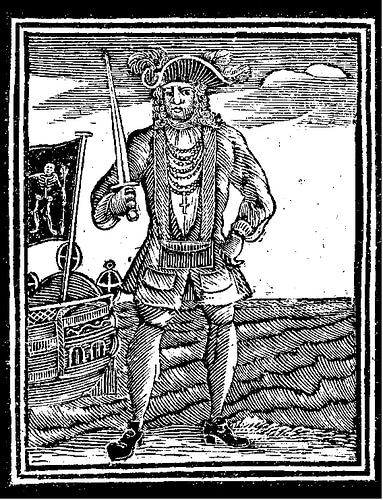
Years active: 1719-1722
Location: Off the east coast of North America and the east coast of Africa.
Fate: Struck by cannon fire in battle against English Navy.
Claim to fame: Perhaps the most successful pirate ever.
Although he is by no means the most famous of pirates, Bartholomew Roberts was far and away the best at what he did. Over the course of his career, Roberts is believed to have captured in excess of 470 ships while operating in the Atlantic and Indian Oceans. Making his success even more remarkable is the fact that Roberts was reluctant to become a pirate in the first place. As a young man aboard a merchant ship, he and his crewmates had been captured by pirates and held hostage. Robert’s navigational skills quickly set him apart from other hostages, and he soon became a valuable resource to his captors. Incredibly, as this relationship grew, he was eventually voted by the crew to become their captain. Reluctant at first, history notes that Roberts eventually came to the famous conclusion that there was simply no reason good enough to struggle his way through an honest living, and that henceforth his motto would be “a merry life and a short one.†When he was killed by grapeshot at age 39, the Golden Age of Piracy symbolically drew to a close.
Edward Teach aka “Blackbeardâ€
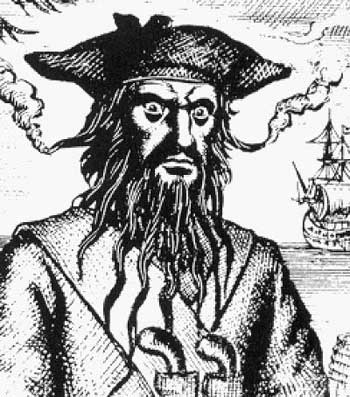
Years active: 1716–1718
Location: East coast of North America and the Caribbean Sea.
Fate: Killed in battle against English Navy.
Claim to fame: Successfully blockaded the harbor of Charleston, South Carolina. Also known for his flamboyant appearance and dark, full beard (to which he tied lit fuses as a method of intimidation during battle) which earned him his namesake.
Perhaps the most famous pirate ever, a claim that can likely be attributed as much to his catchy nickname as to his piratical prowess. Much to his credit, however, was the fact that he managed to mobilize a rather large fleet of pirate ships which he led into various assaults. Most notably, the flotilla under the leadership of Blackbeard (now referring to himself as Commodore) managed to blockade the harbor at Charleston, SC for several days. During the blockade they captured several ships and took many hostages, all of which were eventually exchanged for various medicines required by his crew. Teach terrorized the West Indies and the Atlantic coast for years at the helm of the Queen Anne’s Revenge before finally being bested by an English assault at the Battle of Ocracoke off the coast of North Carolina. In his final moments, Teach is said to have fought off a multitude of Englishmen before succumbing to his wounds, which totaled at least five gunshots and over twenty sabre cuts.
Edward England
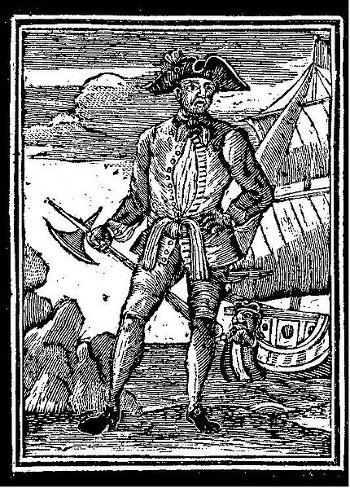
Years active: 1718-1720
Location: Caribbean Sea and Indian Ocean.
Fate: Marooned on Mauritius and died shortly thereafter.
Claim to fame: Design of his flag.
Like Black Bart, Edward England came into a life of piratry after he was captured by a ship of swashbucklers and forced to join the crew. After a brief stint in the Caribbean, he worked his way up the pirate ladder until he had gained command of his own vessel, which he used to sail the Indian Ocean, raiding slave ships. But England is really remembered solely for the design of his flag, a skull over two crossed thigh bones, which went on to become the famous “jolly roger†flag associated with all pirates.
“Calico Jack†Rackham
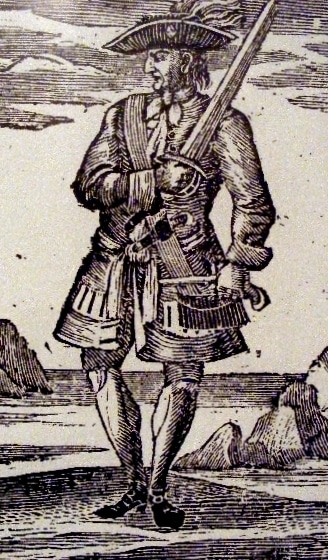
Years active: 1718-1720
Location: Caribbean Sea.
Fate: Hung and gibbeted in Port Royal, Jamaica.
Claim to fame: First known pirate captain to allow women on board.
Calico Jack did little to warrant his place in pirate lore. A meagerly successful pirate, he focused most of his activity on capturing small fishing vessels and commercial ships. During a brief attempt at retirement in 1719, Rackham met and fell in love the now infamous Anne Bonny, who would join him on his future adventures, disguised as a man to conceal her identity. Later, when Rackham’s crew captured a Dutch merchant vessel, they unknowingly took another disguised woman, Mary Read, on board. Bonny and Read proved to be excellent pirates, and it is their success that made Jack Rackham famous. So ill-suited to be captain was Rackham that when his ship and crew were finally captured he was too drunk to even put up a fight, and only Anne and Mary defended the ship and crew.
Be sure to listen to our podcast with Robert Kurson about modern-day pirate hunters:


